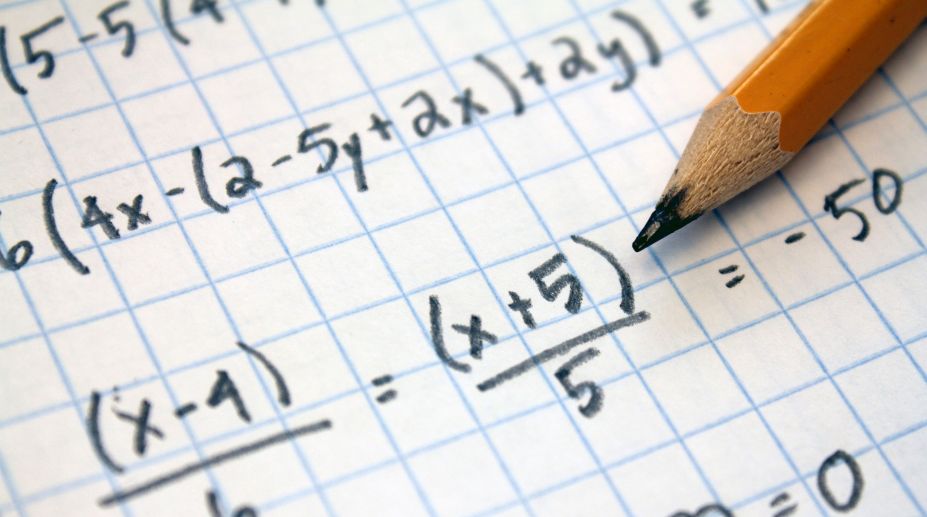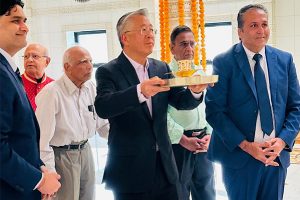Mathematicians of highest order, from India and abroad, met to shed light on the domain of digits at the 82nd annual conference of Indian Mathematical Society held at the University of Kalyani, recently. The IMS conference was a rare occasion that Bengal had witnessed for the first time in1973 when Jadavpur University had hosted the programme. Forty-three-years down the line — this was the second chance to meet the torchbearers of higher learning in the field of mathematics.
Scholars from state and central universities, IITs and other reputed institutes presented their research papers while experts in this field delivered lectures on a number of topics. In addition to this, it unfolded a lot more as the four day-long event progressed with scholars-guide interaction, symposia and selected talks by renowned mathematicians.
The vice-chancellor of Kalyani University, Shankar Kumar Ghosh lit the inaugural lamp while the IMS President, Dr DV Pai of IIT, Gandhinagar and Professor Sanjib Kumar Datta of the department of mathematics under Kalyani University opened the conference.
Advertisement
Conceived as a national forum for higher standard of education, the Indian Mathematical Society was founded by V Ramswami Aiyar along with 20 other members in 1907. IMS, which has its registered office at the department of mathematics, University of Pune, is the oldest science society in India, said Professor N K Thakare, secretary of IMS.
Dr Pai in his inaugural address claimed that the number zero and decimal place value system were India’s contribution to world mathematics. He stated that the country’s share of world research in mathematical sciences improved from 0.1 per cent to around four per cent in the last century and some fields like probability and mathematical statistics, the percentage was as high as 12 to 15 per cent.
He observed that though India was moving in the right direction in terms of quantity, but quality of research was not up to the mark as most universities do not require course-work for their PhD programmes.
Programmes like the Advances Training in Mathematics sponsored by the National Board of Higher Mathematics and the National Programme on Differential Equations are playing rightful role for quality attainment.
Apart from recalling outstanding contributions like Srinivasa Ramanujan, the IMS chief presented a brief overview of India’s journey through Vedic mathematics, Jain mathematics, Kerala School of Mathematics and several others in developing the subject as an academic discipline followed globally.
Dr Pai also recounted contribution of professional societies like the Calcutta Mathematical Society which was founded in 1908. The first set of PhD thesis in India came from this university in the 20th century that contributed to the foundation of the Operation Research Society of India.
The speakers mentioned that with at least 700 universities comprising state, central and private varsities, and 16 IITs to be backed by six more new IITs coming up at Tirupati, Palakkad, Jammu, Chhatisgarh, Goa and Dharwar, is ready to move steadily with the future of mathematics research. The IMS heads also appreciated the central government’s initiative to establish five Indian Institutes of Science Education and Research in Kolkata, Pune, Mohali, Bhopal, Thiruvanantapuram. Three more IISERs are coming up at Tirupathi, Berhampore of Odisha and Nagaland, the officials informed.
The speakers expressed concern about the current status of applied mathematics. In India applied mathematics is lagging and even in the field of pure mathematics, the available number of well-trained student and researchers is still a matter of concern. The prime attraction was plenary lecture on the topic “Fourier series: myths, facts and applications”. Professor Hrushikesh Mhaskar of Claremont Graduate University at Claremont, USA delivered the plenary talk.
There are several memorial awards in the names of mathematics legends like PL Bhatnagar, Srinivasa Ramanujan, V Ramswami Iyer, Hansraj Gupta and Ganesh Prasad. The memorial lectures were delivered by Prof GP Raja Sekhar of IIT Kharagpur, Prof Eknath Ghate of TIFR, Mumbai, Prof CS Arvinda of TIFR-CAM, Bangalore and Prof Neena Gupta of ISI, Kolkata.
The status of Bengal in higher mathematics was far from satisfactory because none of the research scholars who presented papers could win an IMS award. Two scholars who received the awards were Somnath Paul from Tezpur University and Mukta Garg from University of Delhi.
The conference came up with a number of publications like souvenir containing the history of IMS and its previous programmes including its silver jubilee celebration inaugurated by former Prime Minister of India, Jawaharlal Nehru at Allahabad. The souvenir also recorded account of union government releasing postage stamp on IMS in a gesture to recognise the society’s contribution in higher education. It also published a commemorative booklet focusing on a recorded conversion between the Nobel laureate Bengali poet Rabindranath Tagore and Albert Einstein, the scientist known for his theory of relativity.
The meeting proposed some collaboration between the IMS and the University of Kalyani for betterment of research, teaching and learning in mathematics. The VC said he was open to the idea of developing skills of university students with rural background and it would be helpful if the IMS researchers develop apps to be used by parents of school students. “In order to improve the status of higher mathematics learning and research culture in India, the central government needs to form an independent council by assimilating all the bodies working in the field of mathematics research and study. Higher education should be the prerogative of the government as state universities do not get enough funds which are released for central universities,” said Thakare.
The state government officials observed that the conference was the biggest of its kind in India. On behalf of the local representative, the sub-divisional officer of Kalyani, Swapan Kundu remarked that the conference was a Kumbhmela (the holy congregation) of mathematicians.
Advertisement











